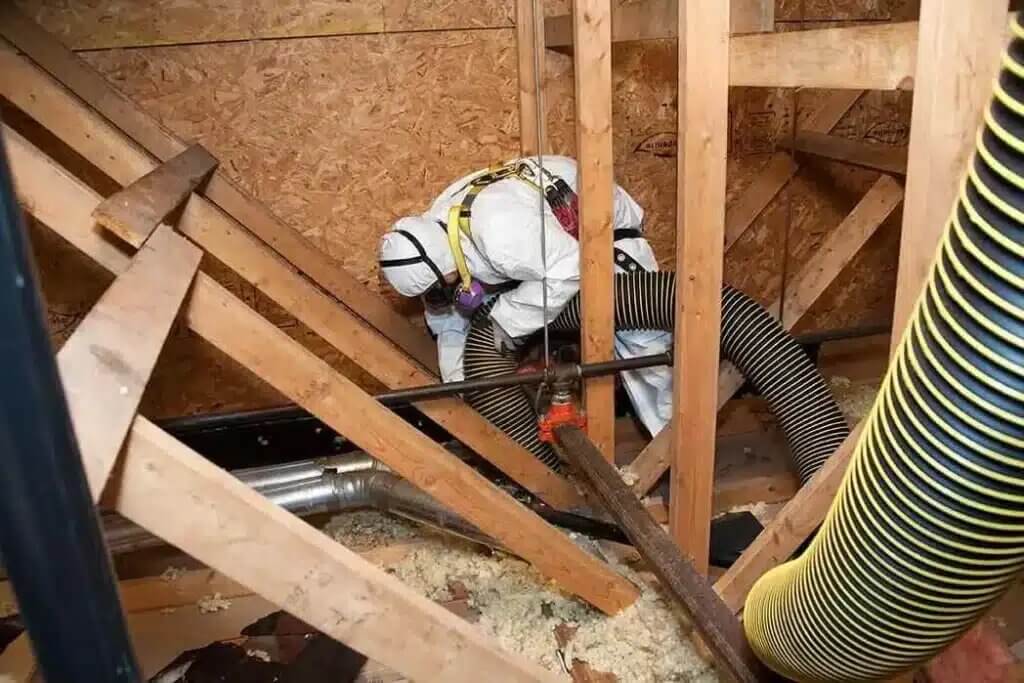
Insulation is a key factor in how efficiently a property holds heating and cooling. But when insulation becomes damaged, outdated, or contaminated, it no longer performs its role. At that point, professional insulation removal is required. This process is more than just taking old materials out—it involves safety, air quality improvement, and preparation for new installation.
This article explains why professional insulation removal is necessary, the step-by-step process, and the advantages for both residential and commercial properties.
Why Old or Damaged Insulation Needs Removal
Old insulation doesn’t just lose effectiveness over time. It can become a source of health hazards and energy waste. Property owners often overlook the risks of leaving outdated insulation in place, but once insulation is compromised, replacement is the only solution.
Common Reasons for Insulation Removal
- Moisture Damage: Water leaks or humidity can create mold and mildew inside insulation.
- Rodent and Pest Contamination: Droppings and nesting destroy insulation fibers and spread allergens.
- Fire or Smoke Damage: Insulation can hold toxins and odors after fire incidents.
- Aging Materials: Older insulation types like fiberglass batts often compress, leaving gaps.
- Energy Inefficiency: Worn-out insulation reduces indoor comfort and raises utility bills.
The Professional Insulation Removal Process
Professional removal is a structured process. It uses specialized tools and safety methods to protect both the property and the people living or working inside it.
Step 1: Site Assessment and Preparation
A technician evaluates the type of insulation, its condition, and any contaminants. Protective equipment and containment measures are set up to avoid spreading debris.
Step 2: Safe Extraction Methods
- Vacuum-Assisted Removal: High-powered vacuum systems are often used in attics and crawl spaces to pull out insulation quickly and cleanly.
- Manual Removal: In tight or irregular spaces, insulation may be carefully bagged and removed by hand.
Step 3: Handling Hazardous Materials
Some insulation types, such as vermiculite, may contain asbestos. In these cases, strict protocols and specialized disposal are required to meet safety regulations.
Step 4: Disposal and Cleanup
After removal, the area is cleared of dust, debris, and contaminants. Materials are sealed in heavy-duty bags and transported to approved facilities.
Step 5: Preparation for New Insulation
Once the space is clean and inspected, it is ready for modern insulation that restores energy efficiency and indoor comfort.
Benefits of Professional Insulation Removal
Removing compromised insulation brings measurable improvements. Both residential and commercial property owners gain long-term value.
Health and Indoor Air Quality
Old insulation can trap mold spores, rodent waste, and allergens. Removing it improves indoor air quality and reduces respiratory risks.
Energy Efficiency Gains
By clearing out ineffective insulation, the property can receive a modern replacement that reduces heating and cooling loss, lowering utility bills.
Safety and Compliance
Professional removal ensures hazardous materials are handled correctly. This keeps the property compliant with health and safety standards.
Property Longevity
Moisture and pest-damaged insulation can spread problems to surrounding structures. Removal helps preserve rafters, joists, and walls.
 Professional Insulation Removal
Professional Insulation Removal
Comparing DIY vs. Professional Insulation Removal
Many property owners consider handling insulation themselves. However, professional services provide clear advantages.
| Factor | DIY Removal | Professional Removal |
|---|---|---|
| Safety | Risk of exposure to mold, asbestos, and pests | Uses protective equipment and trained methods |
| Speed and Efficiency | Time-consuming and labor-intensive | Specialized vacuums and crews finish faster |
| Disposal | Requires personal arrangements | Handled through licensed waste facilities |
| Quality of Outcome | May leave debris or gaps | Ensures full removal and preparation |
Residential vs. Commercial Insulation Removal
The process is similar across property types, but the scale and priorities differ.
Residential Properties
Homeowners often request removal due to attic contamination or outdated materials. Comfort and air quality are the main goals.
Commercial Properties
In commercial buildings, insulation removal may be part of renovation, fire restoration, or compliance upgrades. The focus is often on large-scale energy savings and regulatory adherence.
Conclusion
Professional insulation removal is not just about taking out old material—it restores safety, prepares the property for better energy performance, and eliminates hidden health risks. Residential and commercial owners alike benefit from the expertise, safety measures, and efficiency that trained crews provide.
By investing in proper removal, property owners create a healthier environment, improve efficiency, and protect their building’s structure. It is the first and most critical step toward upgrading insulation for long-term value.
Learn more about at: https://www.hrfoam.com/?utm_source=backlink
FAQs
How long does insulation removal take?
The time depends on the size of the space and the type of insulation. A standard attic may take a few hours, while larger commercial projects require multiple days.
Can insulation be removed without damaging the property?
Yes. Professionals use vacuum systems and controlled methods to remove insulation without harming rafters, drywall, or wiring.
What happens if damaged insulation is not removed?
Leaving damaged insulation in place allows mold, odors, and contaminants to spread. It also reduces energy efficiency, leading to higher utility bills.
Is old insulation always replaced after removal?
Yes. Removal prepares the space for new insulation, which restores thermal performance and ensures indoor comfort.
Does professional removal handle hazardous insulation types?
Yes. If asbestos or other hazardous materials are present, specialized protocols are followed for safe handling and disposal.
Author: With 15 years of banking experience and five years managing H&R Foam Insulation, Edith is passionate about building strong relationships with customers. Her favorite part of the role is connecting with clients and ensuring their needs are met as she works alongside them to improve the health, comfort, and energy efficiency of their homes.
Reviewer: With 7 years in the spray foam insulation business, Ella Adams offered useful feedback on this post, helping make sure the tips were both realistic and easy to apply.





